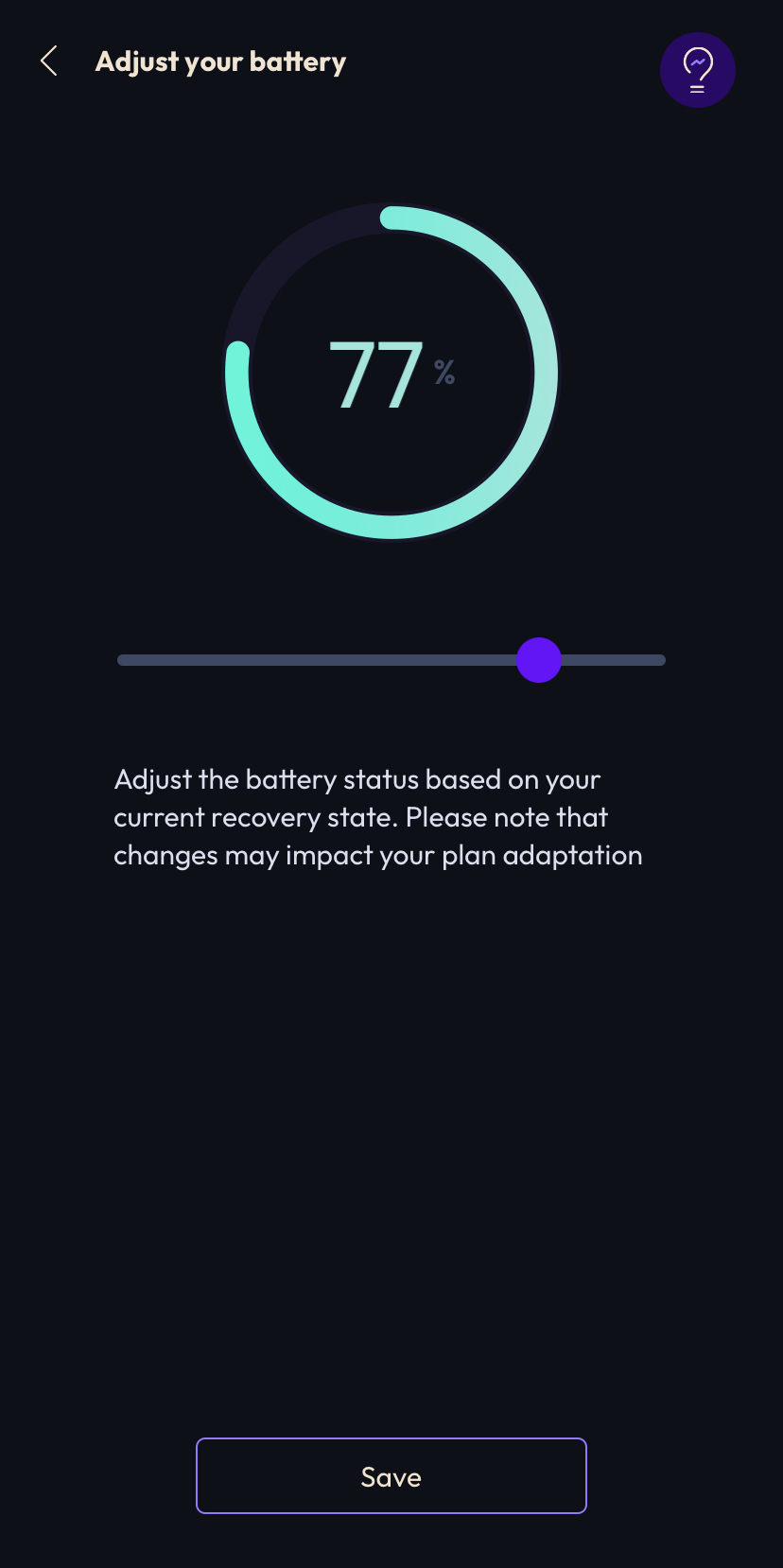To progress in training, it is important to give the body time to recover. Progress is only possible if YOUR load and YOUR recovery fit together perfectly. The main function of 2PEAK is to calculate the ideal training load for YOU and the recovery needed to reach your individual goals.
To recover properly, you need as much discipline as for the training. Regeneration can be directly influenced by various measures, such as adequate sleep or the reduction of daily stress. When signing up for 2PEAK, the ‘recovery battery’ immediately jumps out at you. This article explains the meaning of the battery and how to use it to your advantage.
In the app, the recovery battery is displayed at the top left of the dashboard.
 After a workout, the battery is no longer 100% full because you are fatigued by the load. Training in a pre-fatigue state is an essential part of building fitness, so the time between two workouts should not be so long as to allow the battery to fully recharge. However, this is obviously the case before a competition.
After a workout, the battery is no longer 100% full because you are fatigued by the load. Training in a pre-fatigue state is an essential part of building fitness, so the time between two workouts should not be so long as to allow the battery to fully recharge. However, this is obviously the case before a competition.
By using the battery, 2PEAK monitors recovery so that the reserves are never ‘too low’ for too long (but never ‘too high’ either). This helps to protect the user from injury and the risk of overtraining. For this reason, on some days only light training will be scheduled, when you would actually have more time to train.
Tip: If you move the mouse over the battery symbol in the browser version, the number of hours remaining for a complete regeneration is also displayed.
Adjust the battery regularly
The battery represents its regeneration rate, i.e. it reflects the load based on the documented training. The regeneration time is represented by the regeneration capacity, as explained below. By clicking on the battery, you can change your index manually. Therefore, if you feel that the regeneration index is not correct, you can change it yourself. 2PEAK will recalculate the plan according to the changes made. There can be several reasons for this.

Click on the battery in the app to manually adjust the current regeneration level. The algorithm will learn from the changes made and take them into account for future planning.
Tip: In the browser version you can see and compare the recovery level before and after each workout for the next two weeks. This gives you a better understanding of how important adequate recovery is for consistently following the training plan and getting stronger. It also shows how hard the next training sessions will be.
How the battery works
Now that we’ve established the battery’s fundamental importance, let’s examine its practical functionality. When you first sign up for 2PEAK, you are grouped with other athletes of a similar training age (not to be confused with your biological age). As your first few workouts are documented, the programme learns more about your ability and speed of recovery.
Over time, everything becomes more precise and more suited to you. While the load may be the same for everyone (e.g. 20 minutes of full load is as intense for a professional as for you, but the professional is perhaps more efficient or faster), the recovery capacity is highly individual. It is possible to optimise regeneration capacity to a certain extent through training, but it depends largely on genetics, which can only be influenced to a limited extent.
Regeneration capacity is represented by two dimensions: recovery speed and volume tolerance, i.e. the absolute load that can be ‘absorbed’ (the battery size).
Conclusion
It is not a question of training more or less, but of training effectively! Because every athlete is individual and reacts differently to training. 2PEAK recognises your personal pattern and calculates your optimal training load, so that you receive exactly the right stimulus that will lead to greater progress. Having a bigger or faster battery is not necessarily better, because it might mean having to invest more to achieve the same results. The most important thing is to get the ideal load for you. This also explains why you sometimes see athletes training less (but with the ideal load for them!), yet they are fitter…